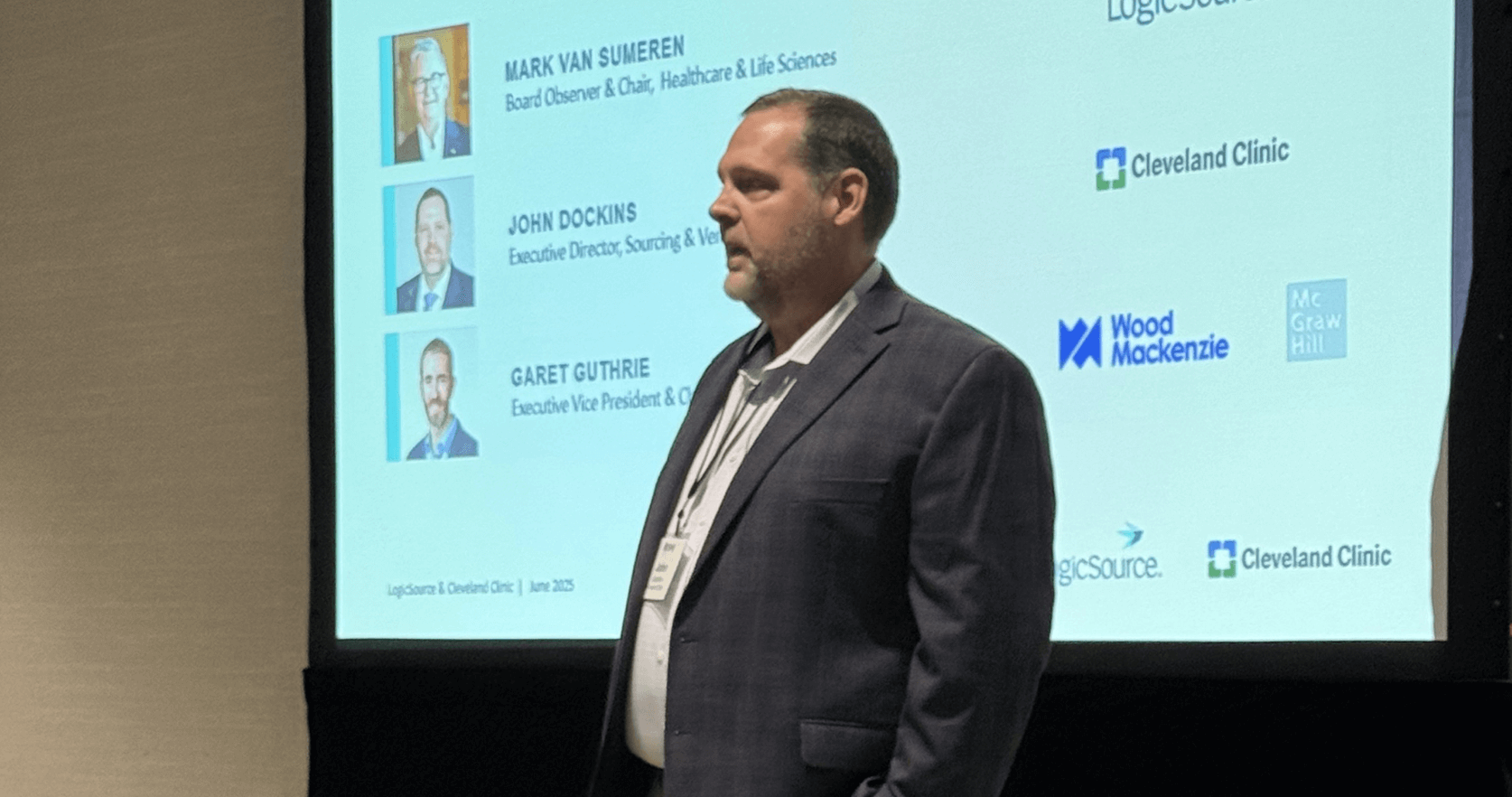

Closing the Margin Gap:
Spend Management Insights from LogicSource’s SMI Summit Workshop
When I asked a room full of senior healthcare executives how much of their organization’s revenue goes to
non-clinical spend, a plurality said it exceeded 25 percent. That number should give any CFO pause. Yet in many health systems, non-clinical procurement does not receive the full attention it deserves and healthcare financial circumstances demand.
At the SMI Spring Conference in Dallas, I had the opportunity to moderate a discussion on this topic with John Dockins, executive director of sourcing and vendor management at Cleveland Clinic, and Garet Guthrie, executive vice president and CFO at Wood Mackenzie. Our goal was to have a candid discussion about the realities of non-clinical procurement and dissect best practices, common roadblocks, and measurable opportunities for improvement.
Non-clinical spend represents a significant share of healthcare budgets. While retail organizations spend around 20 percent of revenue on indirect products and services, healthcare averages closer to 22 percent. That two-point gap may seem small, but it reflects millions of dollars in overlooked expenses. While retailers began addressing indirect spend decades ago, healthcare is still catching up.
Cleveland Clinic is a trailblazer in many ways, including supply chain. The Clinic’s non-clinical procurement program began in 2006 with two people, solely focused on IT. Today, the team has grown to 22 professionals managing a wide range of categories.
Guthrie shared that Wood Mackenzie operates with a small, focused team managing non-clinical procurement. Rather than building a large internal function, Wood Mackenzie prioritizes close collaboration with business stakeholders and leverages an external partner to drive results.
For both Guthrie and Dockins, success hinges on how well procurement integrates with the broader organization. Both leaders agreed that change management is a critical factor in this process. Healthcare procurement teams frequently negotiate great prices yet fail to implement the right operational changes needed to maximize contracts. Take for example, contracts for small package deliveries. Healthcare systems often negotiate prices based on delivery priority but leave the delivery scheduling unmanaged. Requests are frequently made for the earliest possible morning delivery instead of later, cheaper delivery schedules due to inadequate lead time management. With enhanced forethought, costly purchases like this can be minimized.
Without cross-department trust and agreement, negotiation efforts ring hollow. Guthrie emphasized the importance of engaging stakeholders and decision makers from the beginning to ensure that solutions are embraced and implemented effectively. Buy-in across the organization is critical to foster alignment and prioritize the right cost-saving initiatives.
Additionally, building the operational expertise necessary for an effective program takes considerable time and forethought. Cleveland Clinic has spent a decade and still finds opportunities for further development (i.e. additional categories, access to specialized expertise, and more robust benchmarking, including outside healthcare).
Non-clinical procurement is frequently viewed through the narrow lens of price alone; however, focusing only on cutting expenses misses the broader value at stake. Service levels, scope, and geography all influence cost, making true apples-to-apples comparisons difficult. Guthrie emphasized that the lowest-price option is not always the best choice if it fails to meet operational needs. Cross-industry benchmarks help hospitals level-set and reveal how highly efficient retail businesses make strategic purchasing decisions.
Too often, healthcare organizations fall back on the belief that “we’re different,” which becomes a barrier to smarter contracting. Lessons from corporate America provide strong benchmarks by which health systems can improve financial and operational efficiency. Healthcare differences rarely justify major price jumps. In fact, in our work across IT categories, we often hear that healthcare’s unique requirements are the reason for higher costs. However, only about 20 percent of the price differences can be traced to legitimate specification needs, anything above this point often indicates arbitrary premiums on goods and services purchased by health systems.
Effective and efficient use of healthcare dollars is imperative, especially when savings can be reinvested into greater levels of innovation or to improve operating margins. Guthrie stressed that savings must be clearly reflected in the budget to be credible. Dockins echoed this message and emphasized that as healthcare providers navigate economic challenges, reducing expenses is vital to financial health.
Both panelists made a strong case for maximizing external expertise. Bringing in category specialists can accelerate results and help build credibility. Dockins described how the Clinic improved engagement with business owners by bringing external resources with deep category expertise to the table. He shared that if he could do it again, he would have brought in an experienced partner at the outset rather than building everything in-house. At the time, Cleveland Clinic had the runway to do that, but most health systems today do not.
As healthcare continues to navigate financial pressures, non-clinical procurement demands a more strategic focus. The expertise, frameworks, and outcomes shared by leaders like Dockins and Guthrie illustrate what is possible when procurement is integrated, data-informed, and outcome-driven. Their experiences demonstrate the operational and financial gains that have long been achieved in other industries and highlight the results that are well within reach for healthcare too.
Looking for an external partner to help with your indirect sourcing and procurement needs?
Get in touch with us, and we’ll walk you through the process.







